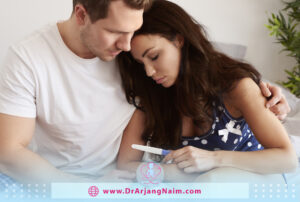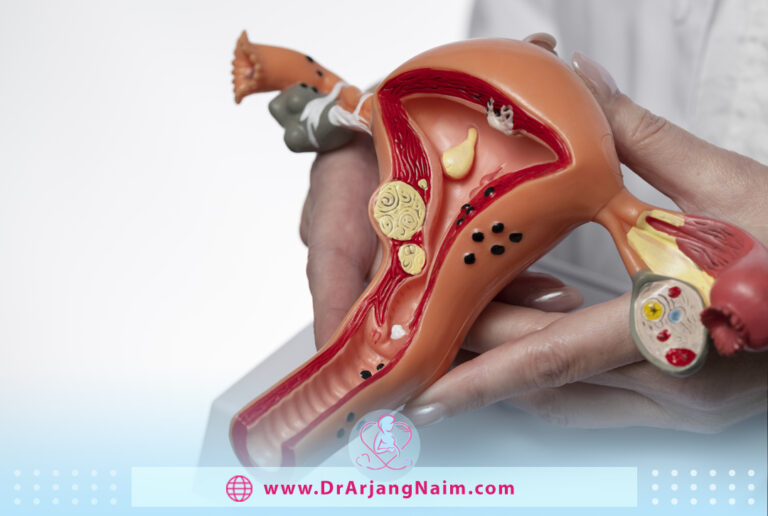A unicornuate uterus is a congenital anomaly in which a person has only one fallopian tube and an abnormal uterine cavity. It is a rare disease that causes pregnancy complications. Certain changes cause hip pain.
What is a unicornuate uterus?
A unicornuate uterus is a rare uterine anomaly in which a woman’s uterus is smaller than usual and has only one fallopian tube instead of two. This condition occurs due to the failure of one of the two ducts that form the uterus to develop properly during fetal development. As a result, a woman with a unicornuate uterus may have difficulty getting pregnant or experience complications during pregnancy, such as miscarriage, preterm labor, or breech presentation. Treatment depends on the severity of the condition, but options may include surgery, fertility treatments, or monitoring during pregnancy.
About 75% of people with a unicornuate uterus have a rudimentary horn. The rudimentary horn is what remains of the absorbed uterine tissue. The primitive horn may or may not be attached to the uterus of the unicorn. The rudimentary horn may or may not have a functional endometrial lining/cavity.
Other names for a unicornuate uterus are a uterus with one horn or a single-horned uterus.
What are congenital uterine anomalies?
Congenital abnormalities of the uterus are abnormalities of the uterus that develop during fetal life. Congenital abnormalities of the uterus occur in less than 5% of women. When a woman is in her mother’s womb, her uterus develops into two halves that fuse before birth. When a woman’s uterus develops differently than most women, it is called a uterine anomaly.
Types of congenital abnormalities of the uterus include:
- Septate: A normal external surface of the uterus but two cavities of the endometrium.
- Bicornuate: An abnormal external surface of the uterus and two cavities of the endometrium
- Arcuate: A normal external surface of the uterus with a depression of 1 cm or less in the endometrial cavity.
- Unicornuate: Only half of the uterus has grown.
- Didelphys: The two halves of the uterus remain separate.
Types of unicornuate uterus
There are variations in how the unicorn uterus appears.
No rudimentary horn
It refers to a unicornuate uterus that does not consist of a rudimentary horn. This type is common and does not cause any unpleasant symptoms.
A rudimentary horn without a cavity
In this type, there is a rudimentary horn with a unicornuate uterus. But since it has no coating, blood does not form in it. It is also known as hornless endometrium and does not cause any uncomfortable symptoms.
Communicating rudimentary horn
A rudimentary horn is attached to the uterus in this type of uterus. It enables menstrual blood to flow freely from the horn to the uterus and out of the body.
Non-communicating rudimentary horn
In this type, the rudimentary horn is not connected to the uterus of the unicorn. The blood flow to the uterus and outside the body is disturbed, and as a result, it causes severe pelvic pain.

Signs and symptoms
A unicornuate uterus is congenital, present from birth. However, many people are unaware of having this condition until they become pregnant and the uterus is seen in the ultrasound.
Suppose the rudimentary horn is not connected to the rest of the uterus and vagina. In that case, menstrual blood will back up (because it cannot leave the vagina), resulting in painful periods.
If the rudimentary horn is attached to the rest of the uterus and vagina, or if a person with a unicornuate uterus does not have a rudimentary horn, they may not experience symptoms until they try to conceive. At that point, they may have trouble getting pregnant or staying pregnant.
In women with a history of repeated miscarriages, the rate of the unicornuate uterus is much higher and varies between 5 and 30%. Approximately 2 to 8 percent of women evaluated for infertility have a unicornuate uterus.
How common is a unicorn uterus?
Having a unicornuate uterus is rare. Approximately 0.4% of the population has a unicornuate uterus. Of all uterine malformations, this is one of the rarest.
Unicornuate uterus and pregnancy
Estimates vary by study, but women with a unicornuate uterus have a roughly 50 percent chance of delivering a healthy baby at full term.
People with a rudimentary horn that connects to the rest of the uterus are at higher risk. Since the rudimentary horn of the unicornuate uterus has significant spatial limitations, the fertilized egg there faces the possibility of rupture.
When the pregnancy implants in the primary horn, the risk of uterine rupture may reach 50%. For this reason, doctors sometimes recommend surgery to remove the rudimentary horn.
Miscarriage
Miscarriage occurs in about one-third of pregnancies where a unicornuate uterus is present. Doctors believe that the risk of miscarriage is more due to abnormalities in the blood supply of the uterus, which may interfere with the function of the placenta or increase the possibility of implantation in the fallopian tubes.
Preterm labor
The risk of preterm delivery is 10 to 20% higher in people with a unicornuate uterus than in people with a normal uterus. Since a unicornuate uterus is smaller than a normal uterus, the baby’s growth may cause premature birth.

Other pregnancy complications
Other pregnancy complications that increase with uterine abnormalities include:
- C-section delivery
- Placenta previa
- Placental abruption
- Intrauterine fetal demise
- Premature rupture of membranes
- Intrauterine growth retardation
- Malpresentation (such as transverse lie or breech presentation)
Diagnosis
A doctor may suspect a unicornuate uterus based on a history of infertility, repeated miscarriages, or premature births. Most of the time, it is not detected during regular pelvic exams.
Imaging studies, such as a hysterosalpingogram (HSG) or ultrasound, may show a unicornuate uterus. In a hysterosalpingogram, dye is inserted into the uterus through the cervix and then X-rayed to visualize the uterus and fallopian tubes.
Hysteroscopy (a test in which the doctor inserts a small camera through the cervix to visualize the inside of the uterus), 3D ultrasound, or laparoscopy may also be used to confirm the diagnosis.
Can a unicornuate uterus be fixed?
Treatment of the unicornuate uterus depends on whether there is a rudimentary horn, the horn is attached to the uterus, and the endometrium within the horn.
Most healthcare providers do not recommend surgical intervention unless severe pain or a mass develops in a rudimentary horn unrelated to the endometrial cavity. There is a risk of health complications with this rudimentary horn, especially if pregnancy occurs. This type of unicornuate uterus causes pelvic pain because menstrual blood is trapped.
Treatment
If there is pelvic pain, painful menstruation, difficulty in pregnancy, or frequent miscarriages, and as a result, the doctor determines that the uterus is unicornuate, treatment methods are suggested according to the type and severity.

Laparoscopic surgery
An unattached hemi-uterus leads to the pooling of menstrual blood and causes severe abdominal pain. Therefore, this treatment method removes the single half of the uterus surgically.
Cervical stitch
Also known as a cerclage, it involves suturing and closing the cervix during pregnancy. This method is recommended if a woman is at high risk of premature birth, miscarriage, or having an incompetent cervix.
In addition, one study reports that cervical cerclage is an effective treatment for unicornuate uterus.
Assisted reproductive technology
It includes techniques that can help you get pregnant in case of infertility. Treatments such as in vitro fertilization (IVF) or intrauterine insemination can be helpful.
Specialised care
Uterine unicornuate pregnancy is often associated with complications such as premature delivery, breech delivery, etc. Therefore, special care and caution should be taken to minimize this risk.
How does the unicorn uterus affect childbirth?
If the uterus is unicornuate, a cesarean section is more likely. The baby is probably in a breech position due to a lack of space in the womb. If the baby is breech, it means it is at the bottom of the uterus, feet first, instead of the head.
The Unicorn uterus is a genetic disorder and uterine abnormality in which only half of the uterus is formed; As a result, these people have one tube instead of two, and the uterus size is smaller than usual. The Unicorn uterus is a very specific and clear uterine abnormality. Still, in most cases, it is not diagnosed until the patient decides to get pregnant and may have problems with pregnancy.
The bottom line
The single-horned uterus is a rare abnormality that can affect conception and pregnancy. Sometimes the side effects of a unicornuate uterus are more and may even prevent pregnancy. Fortunately, despite the advances made in medical science, there are many assisted reproductive techniques for pregnancy that, with the help of a specialist doctor, can help infertile people and provide the possibility of pregnancy for these people. Gaining more knowledge increases the readiness of mothers during the nine months of pregnancy. Dr. Arjang Naim can help you in this field.
Additional questions
- Are there any health risks associated with a unicorn uterus?
There is an association between renal agenesis and unicornuate uterus. Renal agenesis is when a kidney is lost at birth. Renal malformations are usually seen on the same side as the primary horn. Researchers aren’t entirely sure why this happens. A unicornuate uterus also puts a person at greater risk for endometriosis if the primary horn is obstructed.
- Is breech delivery normal?
It is breech when the baby is placed feet or bottom first in the womb. Ideally, the baby will be positioned head-first during vaginal delivery. Most breech babies return to the head-first position by 36 weeks. Some breech babies can be delivered vaginally, but a C-section is usually recommended.
- What is the cause of intrauterine fetal death?
There are many reasons for stillbirth:
- Complications during childbirth
- High blood pressure
- Diabetes
- Infection
- Congenital and genetic abnormalities
- Placental dysfunction
- Continued pregnancy beyond forty weeks
- Can a unicorn uterus carry twins?
If there is a unicornuate uterus, it is possible to carry twins. This would be a very high risk because the shape and size of the uterus are not ideal for two babies.
- What are the four types of uterus?
- Duplex
- Bipartite
- Bicornuate
- Simplex
References
https://my.clevelandclinic.org/health/diseases/23302-unicornuate-uterus#management-and-treatment
https://www.verywellfamily.com/unicornuate-uterus-and-miscarriage-pregnancy-risks-2371693
https://birlafertility.com/blogs/what-is-unicornuate-uterus/
https://www.webmd.com/children/what-is-unicornuate-uterus
https://www.healthline.com/health/fertility/unicornuate-uterus




